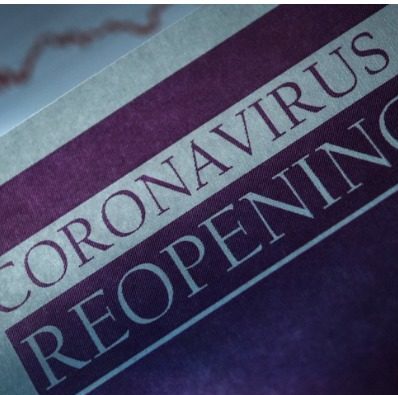
The Importance of Cleaning Process Documentation in Reopening Your Facilities
The role of cleaning and disinfecting in the fight against the spread of infectious disease has been elevated to a new level with the Coronavirus pandemic. And as each industry continues to strategize on how to safely remain open or reopen after closure, every aspect of a facility’s cleaning practice should be reviewed, including all the commercial cleaning equipment needed and the cleaning protocols involved.
During this review, all plans should include considerations about the safety of custodial staff and the key constituents of your facility – students, employees, visitors, customers, etc. When finalized, documenting your final cleaning procedures will increase both the short-term goal of reopening safely and the longer-term goal of sustaining cleaner, healthier and safer cleaning and disinfecting protocols, as well has having a pandemic preparedness plan for guidance during future scenarios.
Guidance for Cleaning and Disinfecting
The CDC has provided its Cleaning and Disinfecting Decision Tool to facilities to formulate their plans for reducing the risk of exposure to COVID-19 by cleaning and disinfecting. Actionable steps include:
1. Develop Your Plan:
This step includes determining what needs to be cleaned, how areas will be disinfected, and what commercial cleaning equipment is required to carry out the processes. When evaluating cleaning equipment, consider professional cleaning tools that not only correctly clean before disinfection, but also reduce the potential for exposure to harmful contaminants, such as:
- Microfiber-based Cleaning Products: Laboratory tests show that microfiber cloths and microfiber mop heads reduce surface debris and lower bacteria levels by 96%.
- Dual-bucket Mopping Systems: The use of floor mopping and spot clean systems with dual-compartment buckets will separate clean water from dirty solution, ensuring the use of clean solution throughout the duration of the cleaning process.
- Telescopic Extension Poles: Telescopic poles help keep workers safely on the ground as they reach to heights of 60 feet and beyond, but they also help keep cleaning staff at a safe distance away from harmful germs and contaminants, more so than when using traditional spray and wipe methods.
- Contact Free Litter Removal Tools: Purpose-built grabbers and picker pins allow workers to collect refuse without coming in direct contact with any contaminants, keeping them at a safe distance while performing their job.
2. Implement Your Plan
As part of this step, the CDC advises to clean visibly dirty surfaces prior to disinfection and to use the appropriate cleaning or disinfectant product. When it comes to which EPA approved disinfectants you use , look for commercial cleaning tools that provide disinfectant flexibility. Some floor cleaning kits and surface cleaning tools have the ability to dispense liquid from the bottle on board, and there are glass and window cleaning kits that come with a refillable system that allows the use of your preferred cleaning solution.
3. Maintain and Revise Your Plan
Continue or revise your plan to maintain safe practices and reduce the potential for exposure, following updated guidance and current circumstances.
Documenting Your Facility’s Cleaning Procedures
Although the CDC doesn’t include the documentation of cleaning and disinfecting plans in their guidelines, there is a multitude of benefits in developing a written plan and distributing it to employees and cleaning staff. With your cleaning protocols clearly defined and distributed, you’ll be able to more easily and quickly:
- Identify and implement corrective actions in your cleaning processes;
- Measure quality metrics to verify the adequacy of cleaning;
- Target where cleaning staff training is needed; and
- Pinpoint areas to schedule more or less periodic cleanings.
For employers, documenting the steps they’ve taken to assure their cleaning and disinfection procedures are compliant with the latest guidance and recommendations go a long way in keeping employees safe and motivated, increasing worker safety and ultimately, maintaining an environment for operating in the ‘new normal.’ Cleaning protocol documentation for your facility could include:
- Cleaning and disinfecting schedules
- Cleaning staff assignments
- Cleaning protocols, inclusive of such definitions of:
- Types of cleaning and disinfection agents
- Types of water to use and methods of dilution
- Approved cleaning supplies
- General principles of cleaning each area
- Specific activities to occur more frequently than on a daily and monthly basis
- Scope of work of third-party janitorial services
- Purchase orders and shipping receipts for cleaning supplies and commercial cleaning equipment
- Employee communications
To get started with your documentation process, checkout ISSA’s Facility Cleaning & Disinfecting Checklist.
Reopening with Confidence and Cleaning Process Documentation
With an investment in the right cleaning tools and a documented preparedness plan, followed by janitorial staff training staff, you’ll be better poised to re-open with confidence and maintain a level of cleanliness that protects your staff and patrons. In a time of a global pandemic, the need to reassess cleaning and disinfecting protocols is eminent, but the time you dedicate now to revising and documenting your cleaning procedures will have a positive, long-term impact on the health and safety of your facility and you’ll be better prepared for future emergency responses.
Learn more about technologies and tools that help fight against infections-diseases >
